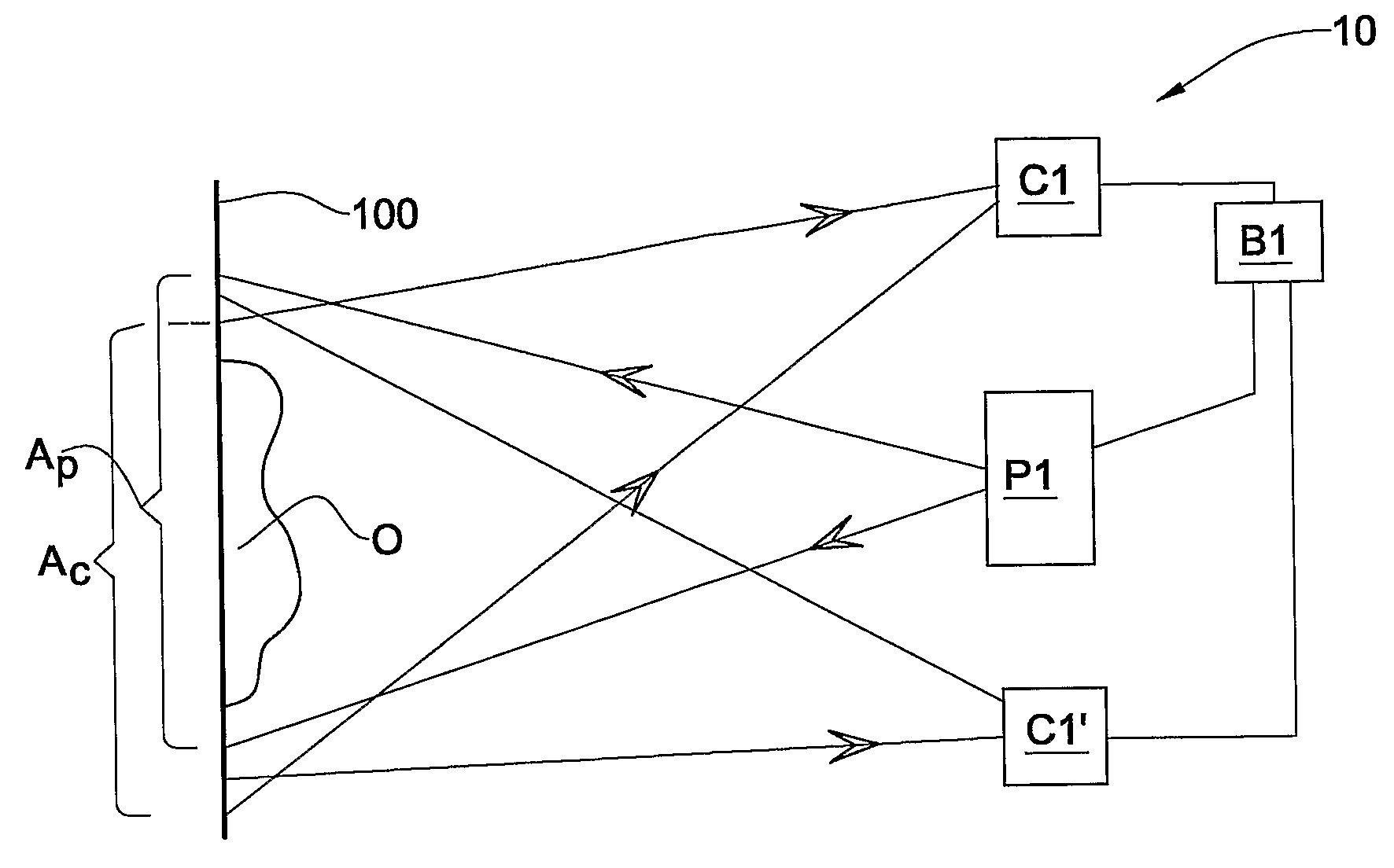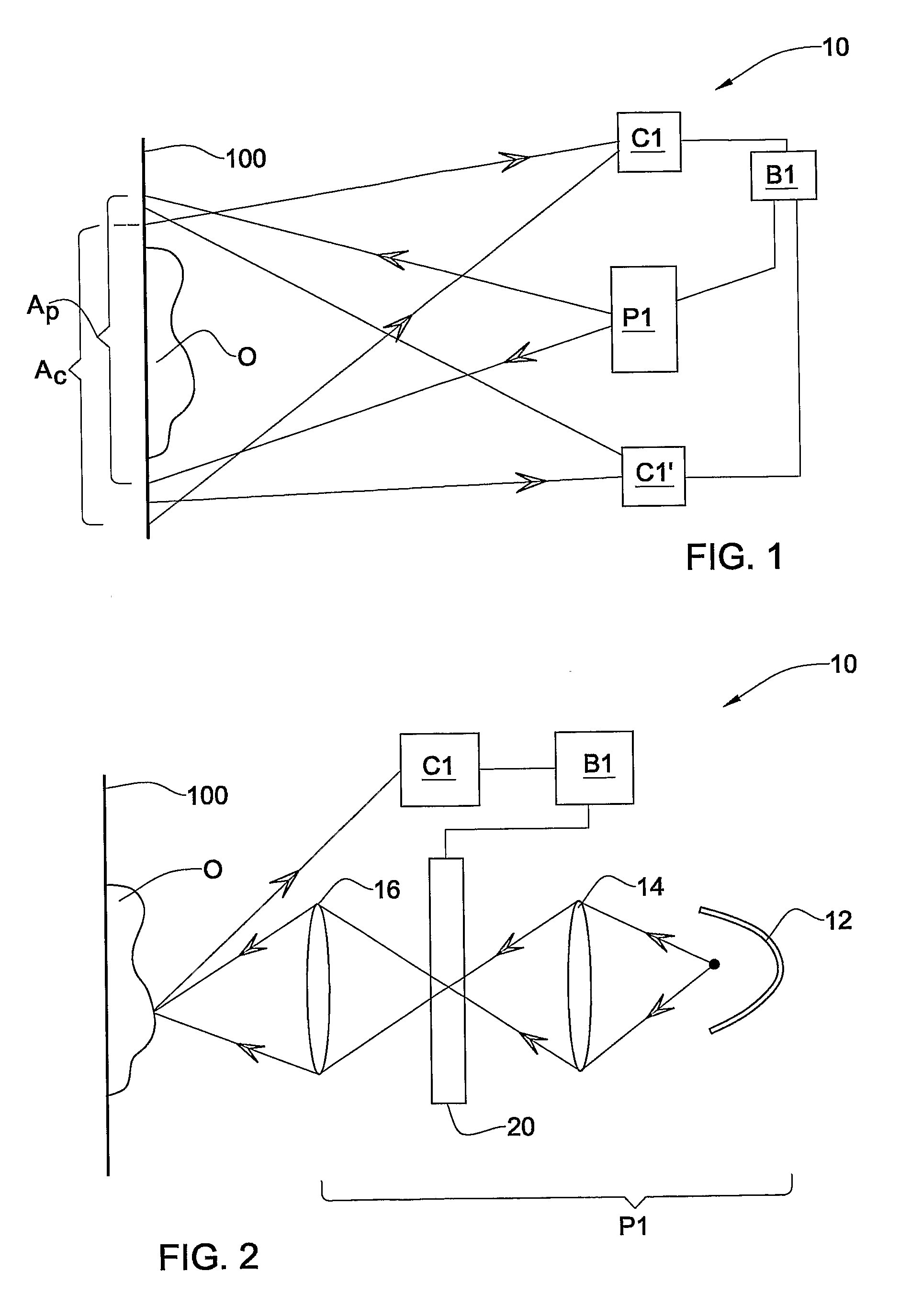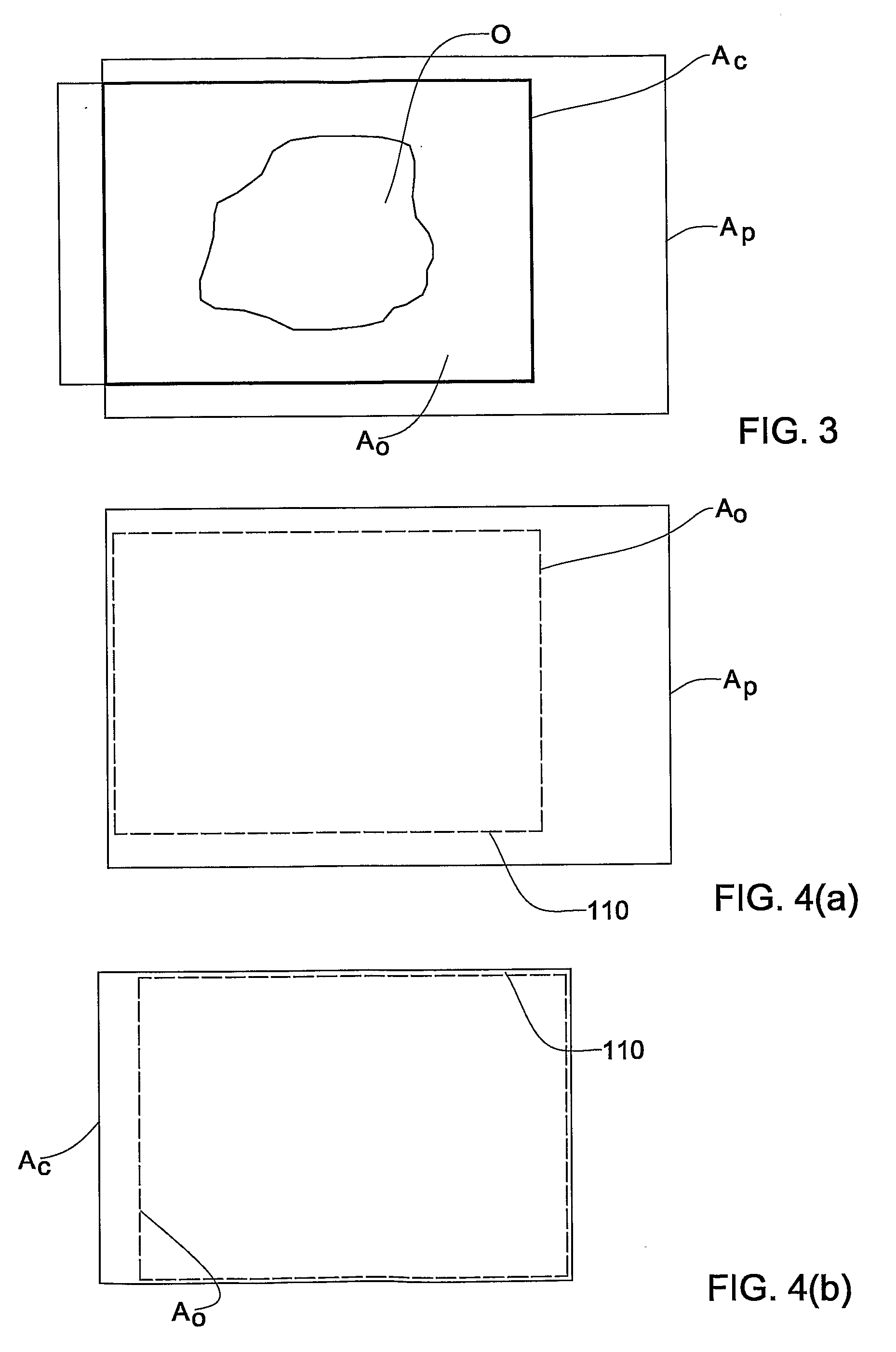Method and System for Illumination Adjustment
a technology of illumination adjustment and illumination, applied in the field of illumination and imaging systems and methods, can solve the problems of poor quality or inaccurate image and optical measurement of objects, especially when obtained via electronic imaging equipment (also referred to as “machine vision”), saturation and loss of information in other parts of the image, and achieve low cost manufacturing. , good color representation, high fill factor
- Summary
- Abstract
- Description
- Claims
- Application Information
AI Technical Summary
Benefits of technology
Problems solved by technology
Method used
Image
Examples
Embodiment Construction
[0071]In a first embodiment of the invention, a system for illumination and imaging, illustrated in FIGS. 1 and 2, and generally designated with the reference numeral 10, comprises a controllable illumination unit P1, at least one imaging device C1 (in FIG. 1, an additional imaging device C1′ is also shown), and an illumination control unit B1 operatively connected or coupled to the imaging device(s) and to the illumination unit P1. According to this embodiment, the system is set up such that illumination radiation from illumination unit P1 projected to an object is reflected (generally non-specularly) thereby towards one or more imaging devices C1, C1′, wherein an image taken of the object by the imaging device comprises reflectance data associated with the object.
[0072]Referring in particular to FIG. 2, the controllable illumination unit P1 comprises an illumination source 12, a focusing optics 14, and a spatial light modulator (SLM) such as for example a controllable Liquid Cryst...
PUM
 Login to View More
Login to View More Abstract
Description
Claims
Application Information
 Login to View More
Login to View More - R&D
- Intellectual Property
- Life Sciences
- Materials
- Tech Scout
- Unparalleled Data Quality
- Higher Quality Content
- 60% Fewer Hallucinations
Browse by: Latest US Patents, China's latest patents, Technical Efficacy Thesaurus, Application Domain, Technology Topic, Popular Technical Reports.
© 2025 PatSnap. All rights reserved.Legal|Privacy policy|Modern Slavery Act Transparency Statement|Sitemap|About US| Contact US: help@patsnap.com



